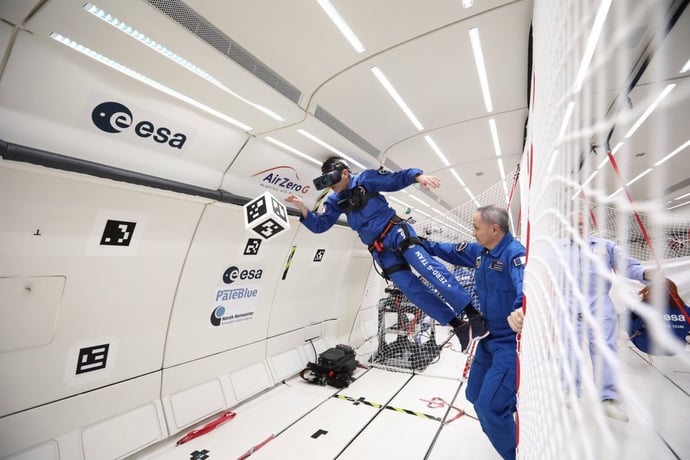Advancements in virtual product development are essential for the automotive industry
Driving simulators are increasingly important in automotive development. Original equipment manufacturers (OEMs) use driving simulators to improve vehicle performance from a human-centric perspective. This gives OEMs a competitive advantage as they differentiate themselves from other vehicles and OEMs in the market.
Physical testing of vehicle prototypes has steadily decreased over the last decades, as virtual development tools have become widely adopted across automotive development departments. As virtual development tools have become better and more realistic, they have steadily gained acceptance and become critical to the automotive development process. From 3D drawings to computer aided engineering (CAE), today there is literally nothing that can’t be calculated before the first bit of hardware is built.
Currently physical testing is still needed for final approval before vehicle production can start: for the car itself this process works perfectly, however, as often the challenge is the human driver. No simulation can tell you how the driver feels when the lane keeping systems gets activated or when doing a sudden emergency braking maneuver.
Therefore the human interaction, once the domain of physical testing, becomes centric thanks to today’s driving simulators, which can cover all these driving maneuvers. They also offer a much more condensed development process, while also eliminating the costly expenses of building prototypes and testing on proving grounds.
Human-Machine-Interface: Differentiation for automotive brand awareness
More realism, less motion sickness
Driving a simulator is not just a daily job for test drivers – it’s also fun. At least for most of the people that have had the chance to sit in a VI-grade driving simulator. However, there are some people for whom this is not possible. For example, when the driver’s brain gets different signals from what he sees on the screen to what his body experiences regarding motions/accelerations – this conflict is what we call motion sickness.
Adding more realism to the simulation normally leads to a better driving experience which is closer to reality. And adding professional XR technology to a driving simulator can help facilitate this process.

Why Varjo and why VI-grade – best in class to team up
Partnering with Varjo is a natural fit for VI-grade, as both companies are leaders in their respective fields. While Varjo is known in the industry for high-end XR headsets, VI-grade is the leader in the automotive driving simulator market for specific application areas (such as Ride & Handling, sound/NVH, ADAS, or HMI). VI-grade benefits from a more realistic virtual environment (there is no limit when looking around in the simulator), and Varjo again proves that their systems can cover a wide spectrum of applications, in this case, automotive development.
“Varjo‘s XR-4 Series makes the XR experience more comfortable thanks to the improved headset balance.”
Roberto De Vecchi, Head of Product Development, VI-grade
Varjo XR and VI-WorldSim as the automotive proving ground
To maximize the full potential of their driving simulators, VI-grade uses VI-WorldSim as their standard virtual environment for testing their cars. VI-WorldSim expands the driving simulator’s capability with realistic, multi-agent AI traffic behavior and sensor fusion. The user can set up various simulation scenarios including driving events, environments, road conditions as well as vehicle and pedestrian traffic.
The simulation allows for complete control over the environment, adjusting time of day, weather conditions, and even importing custom vehicles. Because VI-WorldSim is fully integrated into VI-DriveSim, it supports all VI-grade driving simulators and elevates traditional track modeling to a higher level of realism based on the UNREAL graphic engine.
In short, VI-WorldSim is an ideal tool that enables realistic immersive subjective feel and feedback, and the Varjo XR technology makes this even better. Providing users with an unparalleled experience, the Varjo headset enables the user to capture what’s in the real world, allowing users to see their hands and real-world objects like the steering wheel or dashboard superimposed on the virtual environment, hence offering augmented reality virtual passthrough.
Starting with VI-WorldSim version 2024.1, the Varjo XR-3 headset model will be supported, thanks to the OpenXR through Unreal Engine 5. Support for Varjo XR-4 headsets will come shortly.
“Supporting high quality Mixed Reality solutions in professional driving simulators expands the tool’s scope to more advanced HMI applications: one more step on the multidisciplinary journey!,” says Roberto De Vecchi, Head of Product Development at VI-grade.
“Varjo‘s XR-4 Series makes the XR experience more comfortable thanks to the improved headset balance,” De Vecchi says. “Using the highest-resolution displays combined with the wide field of view provides a more natural immersion. These are great enablers for longer driving sessions on the simulator.”
VI-grade’s goal is to enable visualization as realistic as possible to make the simulated world indistinguishable from the real world. Using the Varjo headsets, VI-grade has taken a further step in this multidisciplinary journey. We can all look forward to seeing even more realistic simulations, enhanced user experiences, and the resulting accelerated innovation in the automotive engineering space.



